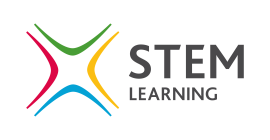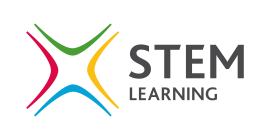Chemical detection - instrumental methods
Elements and compounds can be detected and identified using a variety of instrumental methods. Some instrumental methods are suited to identify elements, while others identify compounds. At this level students should know about the applications of the techniques in broad terms, and with appropriate guidance, be able to interpret spectra. They do not need to know how the instruments work (although teachers will probably find this sort of background knowledge useful when preparing to teach this topic)
There are many opportunties in this topic to explore the benefits and ethics of technological developments. Industry needs rapid and accurate methods for the analysis of its products. There have also been increasing demands from society for safe and reliable monitoring of our health and environment and for crime detection. Research into new compounds and materials needs more sophisticated analysis. The development of modern instrumental methods has been aided by the rapid progress in technologies such as electronics and computing.
Various factors have influenced the development of instrumental methods. With modern methods it is possible to achieve greater sensitivity, so smaller amounts of material can be used, or much smaller amounts of a trace element or compound can be detected in a mixture, e.g. testing water for pollutants and drug testing of athletes.
These methods enable:
• more accurate data
• automation of analysis, multiple samples efficiently analysed
• a greater range of analytical techniques;
Modern analytical laboratories are far more versatile than ever before; they are, however, often expensive, requiring special training and some giving results that can only be interpreted by comparison with known specimens.
Whilst this list provides a source of information and ideas for experimental work, it is important to note that recommendations can date very quickly. Do NOT follow suggestions which conflict with current advice from CLEAPSS, SSERC or recent safety guides. eLibrary users are responsible for ensuring that any activity, including practical work, which they carry out is consistent with current regulations related to Health and Safety and that they carry an appropriate risk assessment. Further information is provided in our Health and Safety guidance.
An introduction to spectroscopy
This is a useful website if you are new to teaching spectroscopy - it provides background information and simulations that will help explain the most common techniques to students.
Most schools are not in a position to have the equipment required to carry out instrumental techniques so you may need to rely on simulations rather than experencing the techniques at first hand. Many university chemistry departments offer the opportunity to visit the departments to see spectroscopy in action and some will run spectra for schools (others have mobile units that can be brought into schools). The same is true of some of the larger pharmaceutical companies.
Analytical techniques can be used to discuss the role of science in crime detection and how industry is regulated, raising ethical questions about individuals’ and companies’ rights and responsibilities which students can explore through debate or role play.
Mass Spectroscopy *suitable for home teaching*
The video in this resource can be used to introduce the uses of mass spectrometry in archaeology. It also provides a simulation which demonstrates how the mass spectrometer works.
The processes involoved in the mass spectrometer can also be modelled using a role play activity. An outline of the mass spectrometer can be mapped out on the floor of the laboratory using masking tape. Students can be allocated the roles of: ioniser, accelerator, deflector and detector while the rest of the class take on roles such as carbon-12 and carbon-14. By acting out the process the students should understand that if the spectrometer is callibrated to deflect and detect only the lighter isotope then the heavier molecules will not be deflected sufficiently to be detected. It will need to be re-calibrated to deflect and detect the heavier isotope.. In this way the relative ammounts of each isotope can be identified.
Mass spectrometry is useful for identifying elements and the relative ratio of isotopes. For molecules, it can help to determine a molecular structure. The atoms or molecules are vaporised and converted to positive ions (based on a single atom or molecular fragment) by bombardment with high energy electrons. The gaseous ions’ masses are analysed according to how far they are deflected in a powerful magnetic field.
Molecules From the Past *suitable for home teaching*
This article can be used as a starter activity when students are introduced to the technique of mass spectrometry (as described in the resource listed above).
This provides an opportunty to discuss the benefits and ethics of technological developments. There have also been increasing demands for reliable analysis using very small amounts of material. For example, in crime detection the use of these techniques in archaeology has supported these technological developments.
Down on the Farm, 10 000 Years Ago
This is an alternative starter activity that can be used when intorducting mass spectrometry and its uses.
Spectroscopy in a Suitcase
This resource provides activities which can be used to teach students about the techniques of ultra violet spectroscopy and infra red spectroscopy. It uses the context of drug use in sport which has been quite topical recently with the London Olympics and recent Winter Olympics.
In teaching these techniques students will need plenty of opportunities to practice analysing the spectra as these will be unfamiliar to them. You could provide labelled spectra of known compounds for students to examine. Provide students with a range of molecules to explore the key features that might be linked to their spectra before revealing the spectra for these molecules.
Ultra-violet spectroscopy is used to determine the purity or concentration of solution of a substance that absorbs UV light.
Infrared spectroscopy helps to identify organic compounds and determine molecular structures. Each molecule absorbs infrared radiation at characteristic energy levels corresponding to particular molecular vibrations. This gives rise to a ‘fingerprint’ pattern of absorption of different infrared frequencies. The Quick Guide to Spectroscopic Methods provides more background information for teaching this technique.
Inspirational Chemistry
This RSC resource can be used to follow up the activities from Spectroscopy in the Suitcase to reinforce students' understanding of UV and IR spectroscopy.
Section 7.4 contains activities based on UV (Cold Light)
Section 7.5 conatins activities based on IR spectoscopy. It has background information and IR spectra for students to identify.
Splitting Light: Spectroscopy
This is a useful article to introduce the use of Atomic Absorption (Emission) Spectroscopy.
The typical spectra that are produced are made up of coloured lines and dark lines.
Emission spectra are indicated by the bright lines while the Absorption spectra are represented by the dark lines
There is some background information for teachers in More Modern Chemical Techniques pages 1 -24
Atomic emission spectroscopy can be used to identify elements and mixtures of elements. In atomic emission spectroscopy, the electrons in atoms are ‘excited’ with heat or electrical energy. The electrons fall back to their original energy levels, emitting the energy they absorbed as visible light. This is also observed in simple flame colour tests, which are also used to identify elements. However, these colours are formed from many specific frequencies of visible light added together, so it is hard to distinguish between two different reds, for example. The sample may also be contaminated with other elements, particularly sodium. Detailed analysis of the different emitted frequencies of visible light (e.g. using a triangular prism) gives a characteristic ‘fingerprint pattern’ by which to identify elements.
Atomic emission spectroscopy can also give a measure of how much of an element is present. The greater the relative intensity of light frequency, the more there is of that element. Atomic emission spectroscopy has many applications. For example, it is used to trace levels of pollutants in water and other products and to monitor the composition of alloys as the molten mixtures are being made. Astrophysicists can identify the composition in distant stars from the light emitted to determine their age.
Catching the drugs cheats
This resource package can be used as a research activity or case study approach. It considers a range of analytical techniques which the students can carry out in the context of drug analysis in sport. It highlights the work of analytical scientists along with ethical considerations that need to be taken into account. The technique of chromatography is used and mass spectrometry is mentioned briefly.
Paper chromatography is likely to be familar to students but and thin layer chromatography will not be as familiar. Both are used to separate and identify the chemicals in a mixture. They are low tech compared to gas-liquid chromatography, which is used to analyse liquid mixtures that can be vaporised (e.g. petrol, blood for alcohol or drug content).
In chromatography, a mobile phase moves through a medium called the stationary phase. The sample of a mixture to be analysed is added to the stationary phase. As the mobile phase moves, the chemicals in the sample move through the stationary phase. Different chemicals move at different speeds so they separate out. The principles of gas chromatography are the same, but in this case the mobile phase is a gas such as helium. It is a more sensitive technique and can be used to separate and measure the composition of complex mixtures. Gel electrophoresis, as used in DNA fingerprinting, can be considered as another form of chromatography .




